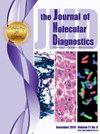异基因造血细胞移植中基于 NGS 的移植监测和微嵌合体检测的性能特征:临床检测验证的实用方法》。
IF 3.4
3区 医学
Q1 PATHOLOGY
引用次数: 0
摘要
通过下一代测序(NGS)进行嵌合体分析是异基因造血细胞移植后移植监测的一种新兴方法。检测微嵌合体(嵌合体小于 1%)需要一种高灵敏度的方法,这种方法可能在早期复发检测、器官移植中的异体移植物监测和其他异体细胞疗法(如微移植)中具有临床实用性。随着越来越多的临床实验室采用这种方法,需要对其性能进行全面评估。本研究评估了一种基于 NGS 的检测方法,该方法同时使用 SNP 和 InDels 作为遗传标记。对准确性、线性度、灵敏度和重现性进行了评估。单供体的分析灵敏度为 0.2%,双供体的分析灵敏度为 0.5%。在整个嵌合率范围内,该检测方法显示出高度的可重复性。与 STR-PCR 的比较显示出很高的一致性;但 NGS 始终能检测到低于 5% 的嵌合率,而 STR-PCR 则检测不到。与 qPCR 的比较显示出很高的一致性,但在中间范围(40-60% 的嵌合率)相关性较低。总之,与 STR-PCR 和 qPCR 相比,该检测方法在单供体和多供体移植的整个嵌合率范围内表现出一致的高灵敏度和准确性。此外,我们还为测序性能和数据分析制定了质量指标标准。最后,我们讨论了临床实验室验证基于 NGS 的嵌合体检测和分析软件的注意事项。本文章由计算机程序翻译,如有差异,请以英文原文为准。
Performance Characteristics of Next-Generation Sequencing–Based Engraftment Monitoring and Microchimerism Detection in Allogeneic Hematopoietic Cell Transplantation
Chimerism analysis by next-generation sequencing (NGS) is an emerging method for engraftment monitoring after allogeneic hematopoietic cell transplantation. A high-sensitivity method is required for the detection of microchimerism (<1% chimerism), which may have clinical utility in early relapse detection, allograft monitoring in organ transplantation, and other allogeneic cellular therapies (such as microtransplantations). As more clinical laboratories adopt this method, a thorough assessment of performance is needed. This study evaluated one such NGS-based assay that uses both single-nucleotide polymorphisms and insertions/deletions as genetic markers. An assessment of accuracy, linearity, sensitivity, and reproducibility was performed. Analytical sensitivity was 0.2% donor for single donor and 0.5% donors for double donors. The assay showed a high degree of reproducibility over a full range of chimerism. Comparison to short-tandem-repeat (STR) PCR showed high concordance; yet <5% chimerism was consistently detected by NGS, but not by STR-PCR. Comparison to real-time quantitative PCR showed high concordance, but with lower correlation in the midrange (40% to 60% chimerism). Overall, the assay showed consistent performance with high sensitivity and accuracy compared with STR-PCR and real-time quantitative PCR across a full range of chimerism in the setting of single-donor and multidonor transplantations. In addition, criteria for quality metrics were established for sequencing performance and data analysis and considerations made for clinical laboratory validation of NGS-based chimerism assay and analysis software.
求助全文
通过发布文献求助,成功后即可免费获取论文全文。
去求助
来源期刊
CiteScore
8.10
自引率
2.40%
发文量
143
审稿时长
43 days
期刊介绍:
The Journal of Molecular Diagnostics, the official publication of the Association for Molecular Pathology (AMP), co-owned by the American Society for Investigative Pathology (ASIP), seeks to publish high quality original papers on scientific advances in the translation and validation of molecular discoveries in medicine into the clinical diagnostic setting, and the description and application of technological advances in the field of molecular diagnostic medicine. The editors welcome for review articles that contain: novel discoveries or clinicopathologic correlations including studies in oncology, infectious diseases, inherited diseases, predisposition to disease, clinical informatics, or the description of polymorphisms linked to disease states or normal variations; the application of diagnostic methodologies in clinical trials; or the development of new or improved molecular methods which may be applied to diagnosis or monitoring of disease or disease predisposition.

 求助内容:
求助内容: 应助结果提醒方式:
应助结果提醒方式:


